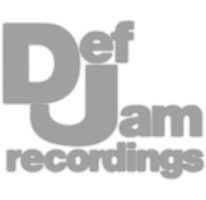Thickening vocals with short, high-density reverb has been a strategy of music production and performance for literally thousands of years. It’s the reason opera houses were designed to be a particular size and shape, and why we sound better when we sing in the shower than in a large room.
Britpressor - Analog ObsessionWeiss DS1 MK3 - SoftubeDrawmer S73 - SoftubeComp Tube STA - ArturiaPresswork - u-hePro-C 2 - FabFilterTRackS Opto Compressor - IK Multimedia
This plugin greatly improves the detail and clarity of an instrument or a full mix by compressing quieter details and bringing them forward. It can also make a master sound full and warm, but you can greatly increase clarity with the high-frequency band.
When you use 2 limiters, you split the processing between the two, in turn mildly reducing the effect of distortion while achieving a louder overall level. Furthermore, if the 2 limiters you use have a unique or complex timbre, combining these can have a beneficial effect.
Although just about all compression will control your dynamics, specific advanced settings will greatly control the level of your vocals. Start by using a higher ratio of 5:1 and combining it with the shortest attack time possible - this will ensure that the totality of the vocal is being compressed.
Stereo expansion is typically static; in other words, it doesn’t respond to the incoming signal or change its setting - this results in a somewhat predictable stereo image. If you use dynamic or program-dependent stereo imaging, you can make your stereo width respond to the incoming signal, making it interesting.
Optical compression has a unique timbre to it and can add a lot of character to your master. The reason being, it typically holds onto the signal for longer than regular compression and releases it in stages depending on the incoming signal’s amplitude and other factors.
Maag EQ - Plugin Alliance Oxford Inflator - Sonnox MV2 - Waves Audio L1 Limiter - Waves Audio Fresh Air - Slate Digital Dyna-Mu - IK Multimedia
Your vocal’s low frequencies are really important - they have the potential to both drastically augment your vocal, and hinder it. Whereas frequencies around 100Hz will provide body and power to your vocal, ones lower than that will most likely be plosives and microphone rumble.
When mastering for streaming, it's best to make your master between -14 LUFS and -8LUFS, as well as leave 2dBTP for gain changes made during the encoding process. Additionally, don’t make your master both dynamic and quiet, since this can result in distortion after normalization.
If you’re mastering with a stereo compressor, you’re affecting all aspects of the track; but if you’re mastering pop or hip-hop, you may not want to compress the low-frequencies. Use an internal side chain to determine which frequencies get compressed, and let the low-end pass through unaffected.
If you want a more impressive sub-bass you can amplify the frequencies with an EQ, distort and saturate them with a frequency specific saturator, use a sub-harmonic generator, and make sub frequencies mono. Additionally, your limiter's release time will affect your master's sub-frequencies.
FabFilter Pro-Q3 FabFilter Saturn 2 U-he Satin Tape NewFangled Elevate TRackS One
When you’re mastering it’s important to have roughly 3 to 6dB of headroom. In other words, the maximum peak of your signal in a digital system should be somewhere between -3dB and -6dB.
T-RackS is an often overlooked and underappreciated software. It provides a lot of flexibility while still keeping things simple.









